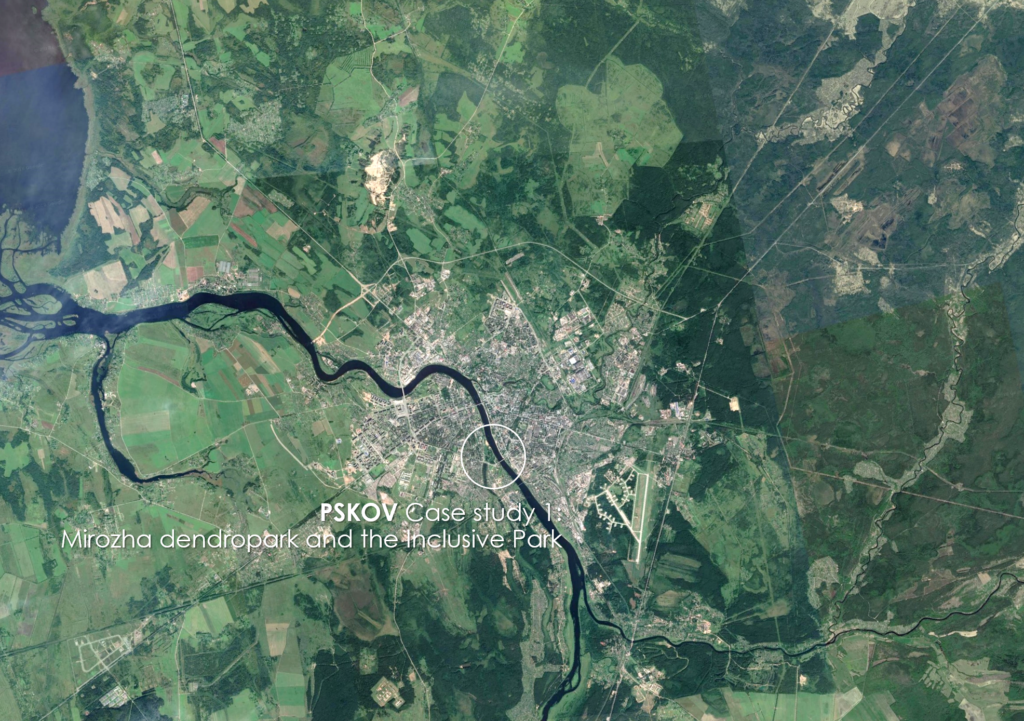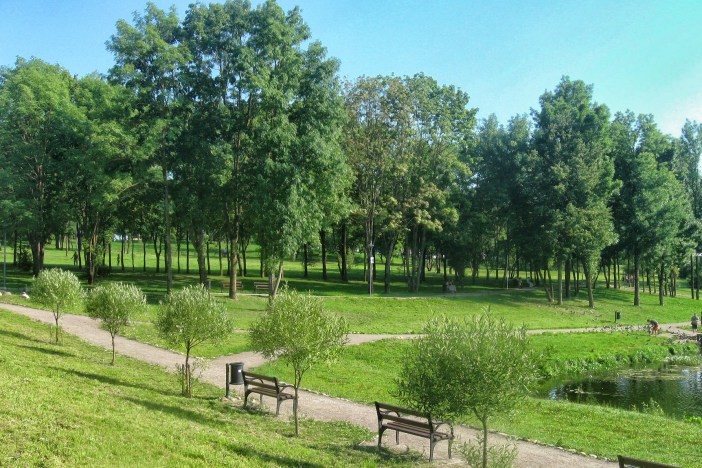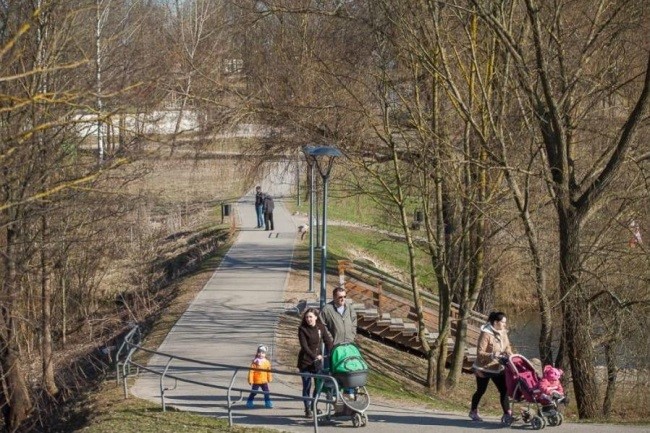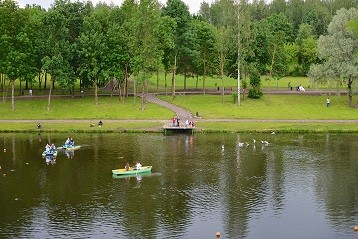Presentation
In 1966, near the Mirozhsky Monastery, trees of various species were planted. It was the initiative of the Pskov residents. This place was called the Arboretum (or Dendropark).
In 1967 a bridge named after the 50th anniversary of the October Revolution was built across the Velikaya river nearby the Dendropark. At the same time, the Mirozha River was blocked with a huge earthen embankment, into which a pipe was laid for the passage of flood waters. The Mirozha River became a cascade of ponds. The dam worked like a filtration mound. Soon after, the Mirozha River turned into a swamp, quickly overgrown with birch trees and small shrubs. In the mid-1980s, there was a need to clear the river and drain the water to the desired level.
By 2007 Mirozha was put in order from the mouth to the dam – the part located within the territory of the Dendropark. Its bed was cleared of silt. Clearing contributed to lowering the water level in the river, which reduced the load on the dam and facilitated the release of springs into the pond.
In December 2008, the dam partially collapsed due to an increase in the intensity of traffic and pressure on the roadway and was restored.
For many years the green area remained unmaintained in terms of greenery care and overgrew with self-seeding, as well as undeveloped in terms of recreational infrastructure (benches, lighting, trails and roads), though local people used it from time to time for a walk, pet walking, etc.
The idea of giving the park new life came in the frame of international project “Tartu, Rezekne, Pskov: Green Management for Urban Development & Planning in EE-LV-RU Border Capitals”, which was developed and implemented by the consortium with the leading of Pskov NGO «Peipsi Project, Pskov». This NGO turned out to be an initiator, inspirer and driver of the process.
The overall project idea was to jointly develop efficient principles of management of green landscapes, incl. natural and artificial ones, inside the cities of Tartu (EE), Rezekne (LV) and Pskov (RU).
The consortium was built up according to the triple-helix like principle – NGO – University – Municipality – from each side of the border. The NGOs acted as a driving force and national coordinators, initiating joint discussions and studies, organizing seminars, study trips and trainings, popularizing and promoting the activities and results of the project. The Universities contributed to the improvement of green management systems in the target cities by analyzing the cities’ needs, implementing scientific inventories of urban green areas, studying of world green practices and software for green management. Municipalities became the main “recipients” of the project results and implemented the project part related to creation of new green landscapes.
A solid part of “investment” activities was to create new large-scale green zones for the project cities. For the city of Pskov, the Dendropark was chosen.
Realized activities:
The Pskov City Property Management Committee of the Pskov regional Administration issued an order granting the city of Pskov permanent use of land at the site of the proposed dendropark arrangement.
An architect from Urban planning and architectural company “Pskovgrazhdanproect” developed a reconstruction project for the territory of the park.
The work in the park included: recreation areas were equipped with wooden elements; lawns and paths were reconstructed; park benches were installed; energy-saving lamps of beautiful unusual shape were installed along the main paths and around the park perimeter; some trees and shrubs were removed, new ones were planted.
University specialists made an inventory of plantings, and created a data base, which became a part of the 7 green spaces data base for the historical part of Pskov. The map of the plantings was created, and GIS-application of urban landscape management for the Pskov city administration was developed.
The project was implemented by the EST-LAT-RUS programme funding, as well as co-financing from the Pskov city Administration. The project was largely successful, and its legacy is explored by many end-user groups in Pskov, and it also gave rise to some follow-up activities
Geographical area
Social dimension: the area became very popular for the recreation among the citizens (old-aged people as well as families with small children), especially from the nearest residential district;
Natural dimension: the area is a biodiversity hub between two ecological corridors – Mirozha river and Velikaya river. Many waterfowl and wading birds live in the pond of the park permanently.
Cultural dimension: visiting of the Mirozha monastery cultural monuments became more easy to get and more attractive.
The green area of Mirozha Dendropark (5 ha) is located in the triangle formed by the Velikaya River and the Mirozha River flowing into it. The area is a part of the Pskov historical city center. And it binds the historical city center with the large residential area built in 1950-60-s.




